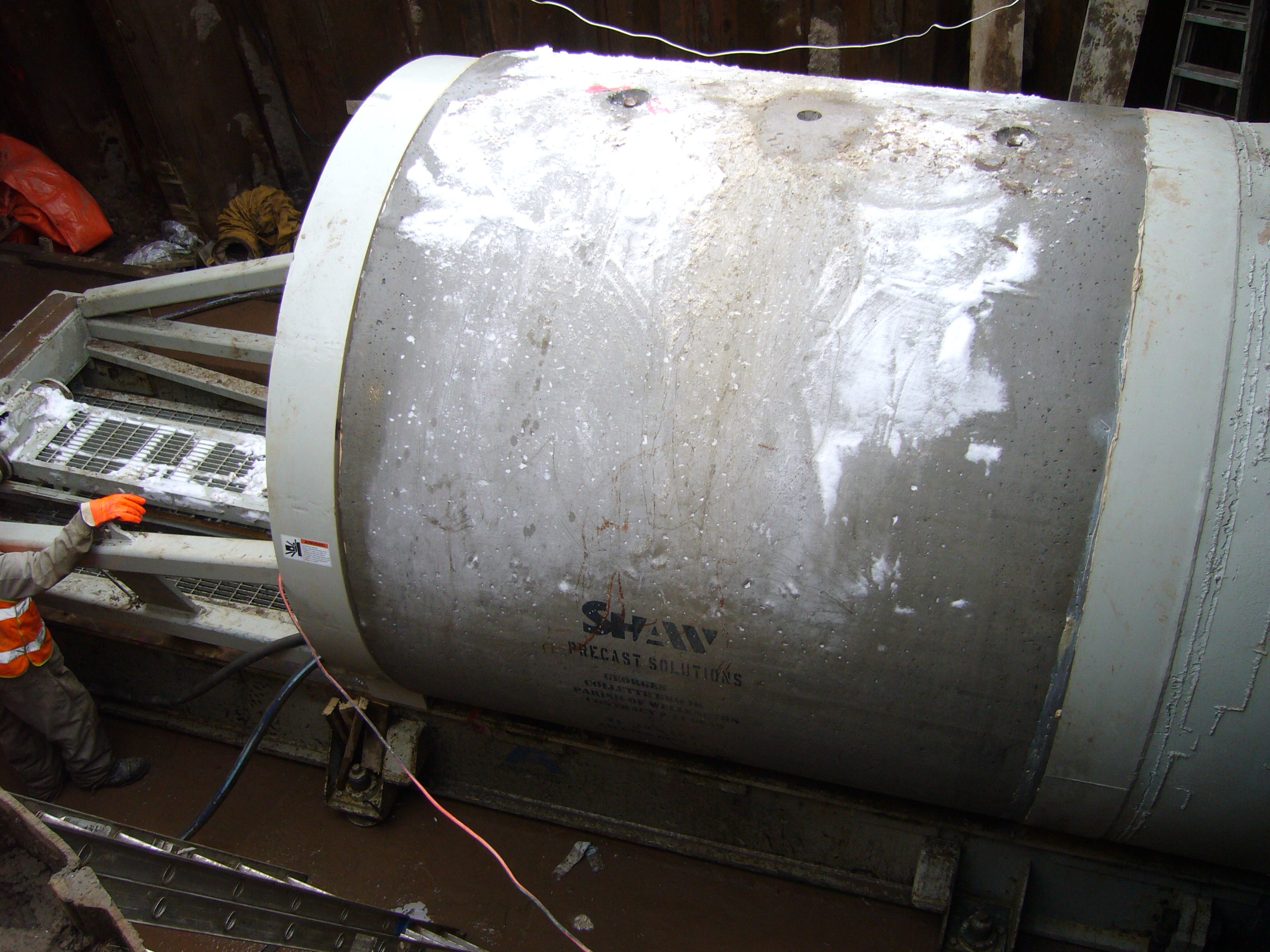 The jacking method of installing concrete pipe is now well established. It has obvious advantages in areas where it is impossible or undesirable to disturb the overlying surface. Design information and case histories of this method are readily available. Practical working space limitations require the use of at least 900mm diameter pipe. It is preferable to use pipe with no increase in outside diameter at the bell, in order to reduce problems with grade alignment.
The jacking method of installing concrete pipe is now well established. It has obvious advantages in areas where it is impossible or undesirable to disturb the overlying surface. Design information and case histories of this method are readily available. Practical working space limitations require the use of at least 900mm diameter pipe. It is preferable to use pipe with no increase in outside diameter at the bell, in order to reduce problems with grade alignment.
The cross sectional area of all “B-wall” pipe is more than adequate to resist axial loading due to normal jacking pressures. For unusually high jacking pressures or excessive unit frictional forces, higher concrete compressive strengths can be specified, typically up to 41 MPa (6000 psi). Designers should consult with our engineering staff if higher compressive strengths are required.
It is extremely important to prevent localized stress concentrations by maintaining uniform distribution of the axial load around the circumference of the pipe wall and ensuring the ends of the pipe are aligned with the tunnel axis. It is also important that the pipe being used meets the dimensional tolerances of the specified standards, to ensure that the ends of the pipe are square to the tunnel axis. A cushioning material should be used at the pipe joints to properly distribute the jacking force through the jacking frame to the pipe.
Further information on concrete pipe for jacking is available from our design staff.